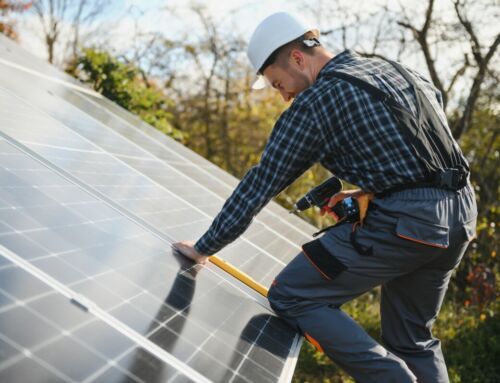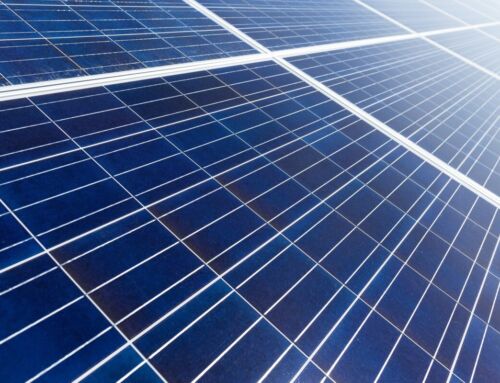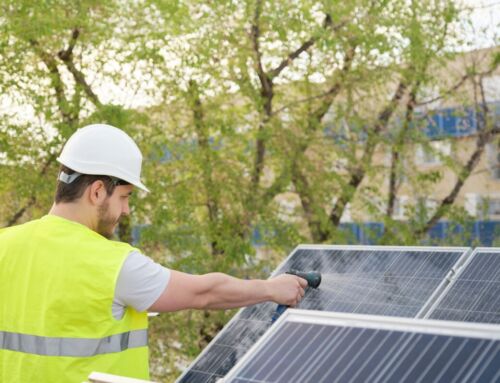A solar panel system is no longer just a futuristic idea—it’s a practical and increasingly common solution for American homeowners looking to cut energy costs and reduce their environmental impact. With electricity prices rising steadily across the U.S., more families are exploring clean, renewable energy alternatives. Among these, solar energy stands out for its long-term savings, government incentives, and ability to power entire homes with minimal maintenance.
The appeal of a solar panel system lies in its ability to transform sunlight—a free and abundant resource—into usable electricity for residential and commercial needs. By installing photovoltaic (PV) panels on your rooftop or property, you can generate your own power, reduce your reliance on the utility grid, and even sell excess energy back through net metering programs. Whether you’re in sunny states like California, Arizona, and Texas, or in less obvious regions, solar technology has advanced to make energy independence more accessible than ever before.
But deciding to go solar isn’t just about slashing your electric bill. It’s about making a long-term investment in your home and future. Thanks to a combination of state and federal incentives, including the 30% Federal Solar Tax Credit (ITC), the upfront costs of solar are more affordable than many people assume. Furthermore, modern systems are built to last for decades, offering reliable performance and significant returns over time.
In this comprehensive guide, we’ll break down everything you need to know about solar panel systems—what they are, how they work, what they cost, and what benefits they bring. Whether you’re considering a grid-tied setup with net metering, an off-grid solution with battery storage, or something in between, understanding your options is the first step toward a smarter energy future.
What Is a Solar Panel System?
A solar panel system is a complete setup designed to capture sunlight and convert it into usable electricity. It typically includes:
-
Solar panels (PV panels) – generate electricity from sunlight
-
Inverter – converts electricity into usable AC power
-
Mounting system – secures panels to the roof or ground
-
Battery storage (optional) – stores excess power
-
Monitoring software – tracks system performance
This combination allows homeowners to harness free solar energy, reduce reliance on the grid, and lower utility bills.
Benefits of Installing a Solar Panel System
1. Reduced Utility Costs
Once installed, a solar panel system can reduce monthly electric bills by 50% to 90%, depending on location and energy usage.
2. Increased Home Value
Homes with solar panels typically sell faster and at a premium. Buyers are attracted to energy-efficient homes with long-term savings.
3. Environmental Impact
Solar energy is clean and renewable. One residential system can offset more than 100,000 pounds of carbon dioxide in its lifetime.
4. Federal and State Incentives
The Investment Tax Credit (ITC) allows homeowners to deduct 30% of installation costs. Additional state and local programs may apply.
How a Solar Panel System Works
Step 1: Capture Sunlight
Photovoltaic cells in the solar panels absorb sunlight and create direct current (DC) electricity.
Step 2: Conversion
An inverter converts DC to alternating current (AC), which powers your home’s electrical system.
Step 3: Usage and Storage
Electricity powers your lights, appliances, and electronics. Excess energy can be stored in batteries or sent to the grid.
Step 4: Net Metering
Many utilities offer net metering, which gives credits for excess electricity sent back to the grid, reducing future bills.

Thinking about solar energy? See how it can lower your bills and elevate your home’s efficiency. Get Your Free Estimate at NewSolar Quotes
Types of Solar Panel Systems
Grid-Tied Systems
-
Most common type in the U.S.
-
Connected to the electric grid
-
No power during outages unless batteries are added
-
Lower upfront cost
Off-Grid Systems
-
No grid connection
-
Requires large battery storage
-
Ideal for remote or rural areas
-
Higher cost and complexity
Hybrid Systems
-
Grid-connected with battery backup
-
Provides energy during outages
-
Offers flexibility and reliability
Key Components of a Solar Panel System
| Component | Function |
|---|---|
| Solar Panels | Convert sunlight into DC electricity |
| Inverter | Converts DC to AC electricity |
| Mounting System | Secures panels to the roof or ground |
| Battery Storage | Stores extra power for nighttime or emergencies |
| Charge Controller | Regulates current to prevent battery overcharging (off-grid) |
| Monitoring Software | Tracks system performance and energy usage |
Cost of a Solar Panel System in the U.S.
| System Size (kW) | Avg. Pre-Incentive Cost | Avg. Cost After 30% ITC |
|---|---|---|
| 4 kW | $10,000–$12,000 | $7,000–$8,400 |
| 6 kW | $15,000–$18,000 | $10,500–$12,600 |
| 10 kW | $25,000–$30,000 | $17,500–$21,000 |
Prices vary based on location, equipment, and installer.
Installation Process
Step 1: Site Evaluation
A professional inspects your roof’s structure, shade coverage, and orientation.
Step 2: System Design
Your solar installer customizes a system based on your energy needs and home layout.
Step 3: Permitting
Permits and paperwork are handled by the installer, including local approvals and net metering applications.
Step 4: Installation
Solar panel installation typically takes 1–3 days, depending on system size.
Step 5: Inspection and Activation
After a utility and building inspection, your system is activated and begins generating electricity.
Financing Options
1. Cash Purchase
-
Full ownership
-
Highest long-term savings
-
Eligible for all incentives
2. Solar Loans
-
Low monthly payments
-
Ownership remains with the homeowner
-
Access to tax credits and rebates
3. Solar Lease or PPA (Power Purchase Agreement)
-
No or low upfront costs
-
Third party owns the system
-
You pay a fixed monthly rate or per kWh
Solar Panel System Maintenance
Lifespan
-
Panels: 25–30 years
-
Inverter: 10–15 years
-
Batteries: 5–15 years (depending on type)
Maintenance Tips
-
Inspect panels annually
-
Wash panels 1–2 times per year
-
Use monitoring apps to track performance
-
Schedule professional servicing as needed
Net Metering: How It Works
Net metering allows homeowners to receive credit for unused electricity sent to the grid. These credits can be used to offset consumption during cloudy days or nighttime. Policies vary by state and utility provider, but most offer favorable rates that shorten the payback period of your system.
Best U.S. States for Solar Panel Systems
-
California – Strong sunlight, robust incentives
-
Texas – High electricity rates make solar cost-effective
-
Arizona – Ideal climate and net metering programs
-
Florida – Year-round sun, growing solar market
-
Massachusetts – State rebates and performance-based incentives
Common Mistakes to Avoid
-
Not assessing roof condition – Replace or repair before installation
-
Choosing the wrong installer – Always check licenses and reviews
-
Overlooking incentives – Research both state and federal benefits
-
Undersizing the system – Account for future energy needs, like EVs
-
Not understanding financing – Choose the right ownership model for your goals
5 FAQs About Solar Panel Systems
1. How long does it take to recoup the investment in a solar panel system?
Most homeowners break even within 6–10 years, depending on system size and local rates.
2. Can a solar panel system power a house during a blackout?
Only hybrid or off-grid systems with batteries provide backup power during outages.
3. What maintenance is required?
Minimal upkeep is needed. Clean panels periodically and monitor system output regularly.
4. Is it better to buy or lease a solar panel system?
Buying offers higher savings and ownership benefits. Leasing may be easier upfront but yields fewer long-term returns.
5. How does solar affect home resale value?
Homes with solar often sell faster and at higher prices. Buyers value reduced utility costs and sustainability.
Final Thoughts
A solar panel system is a smart investment for U.S. homeowners seeking long-term savings, energy independence, and environmental responsibility. With government incentives, falling equipment prices, and improved technology, now is an ideal time to go solar. Whether you’re in a sunny state like California or simply want to future-proof your home, understanding your solar options ensures you make the right choice.
Switch to solar and start saving now! Don’t miss out on a cleaner, cost-effective energy solution. Schedule Your Free Consultation at NewSolar QuotesDiscover more ways to save with solar! Visit New Solar Quote and see the potential for your home.





